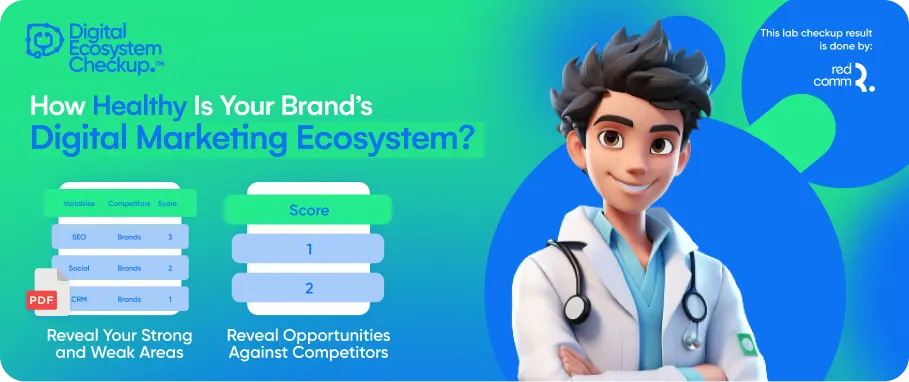In the bustling world of ecommerce, understanding your customers is the name of the game.
5 E-commerce Marketing Strategies to Cater Your Customer Needs in 2024

It's not just about knowing their basic demographics but delving deeper into what truly drives them.
From behavioral patterns to social media habits, each aspect holds valuable insights into crafting a marketing strategy that resonates.
Let's explore the diverse landscape of ecommerce marketing and how these strategies cater to the unique needs of your customers.
1. Behavioral Marketing: Personalize The Experience
Behavioral marketing isn't just about clicks and views, it's about understanding the intricate dance between customers and your platform.
By analyzing user behavior, like what they browse, what they buy, and what they leave behind in their carts, marketers gain valuable insights into individual preferences.
Imagine a scenario where an online bookstore notices a surge in young male users exploring the 'Science Fiction & Fantasy' section without hitting the checkout button.
Through savvy data analysis, the store crafts tailored campaigns, bundling offers, signed editions, and exclusive author interviews.
This personal touch stems from dissecting user behavior and fine-tuning strategies accordingly.
Here's how to wield the power of behavioral marketing:
- Track user interactions: Monitor every click, scroll, and linger to decode user preferences.
- Segment your audience: Divide your users into meaningful groups based on their behavior.
- Craft dynamic content: Tailor your messaging to resonate with each segment's unique interests.
- Constant refinement: Test, tweak, and refine your campaigns to optimize conversion rates.
2. Social Media Marketing: Elevate Brand Visibility
Social media isn't just a digital soapbox anymore; it's a bustling marketplace where brands vie for attention.
Platforms like Facebook, Instagram, and TikTok have evolved into e-commerce juggernauts, offering a plethora of tools to boost brand recognition and drive conversions.
Take Mejuri, a direct-to-consumer jewelry brand, for example. They've mastered the art of Instagram, using stunning visuals and social proof to propagate their 'new luxury' ethos.
By leveraging user-generated content and engaging with their audience in real-time, Mejuri has cultivated a loyal following eager to embrace their minimalist designs.
Here's your roadmap to social media success:
- Active engagement: Foster a community by actively participating in conversations and addressing queries.
- Harness the power of stories: Use ephemeral content to offer exclusive glimpses and time-sensitive deals.
- Leverage social proof: Encourage satisfied customers to share their experiences, bolstering your brand's credibility.
- Consistent branding: Maintain a cohesive voice across all channels for maximum impact and relatability.
3. SEO: Navigate The Search Landscape
Imagine this: your online store gleaming brightly at the top of search engine results, beckoning eager shoppers with open virtual arms.
That's the magic of SEO. This dynamic duo, SEO and ecommerce marketing, go hand in hand like peanut butter and jelly.
SEO, in essence, is the art of making your website more visible on search engines like Google, Amazon, and Bing.
Picture it as paving a smooth road directly to your digital storefront. After all, if your potential customers can't find you, how will they buy from you?
Take a cue from Glossier, the beauty brand that rose from humble blogging beginnings to online supremacy.
Their secret sauce? A meticulously crafted SEO strategy that propelled them to the zenith of online searches.
But it wasn't just about keywords; Glossier delved deep into their audience's psyche, mining invaluable insights to tailor their approach.
Here's your blueprint for SEO success, inspired by Glossier's journey:
- Trim those URLs: Shorten them up and sprinkle keywords generously for maximum impact.
- User is king: Prioritize user-friendly design and seamless navigation to keep visitors hooked.
- Need for speed: Optimize your site's speed to soar up those search rankings and enhance the user experience.
- Dive into data: Analyze user behavior to unearth UX issues and fine-tune your strategy accordingly.
4. Affiliate Marketing: Power in Partnerships
Ever relied on a friend's recommendation for your latest purchase? That's the essence of affiliate marketing, leveraging partnerships to spread the word about your products.
Picture a vast network of influencers and content creators singing praises of your offerings, each sale netting them a sweet commission.
Whether it's the ubiquitous Amazon Associates or niche players like ShareASale, affiliate programs offer a cost-effective avenue to amplify your brand's reach.
Take Beardbrand, purveyor of top-notch men's grooming essentials, which rode the affiliate wave to expand its market presence.
But forging fruitful partnerships isn't just about signing up for any affiliate under the sun. Here's how to navigate the affiliate landscape like a pro:
- Choose wisely: Collaborate with affiliates whose audience aligns with your product ethos for maximum impact.
- Track with precision: Invest in robust tracking tools to ensure your affiliates receive their rightful dues.
- Content is key: Encourage partners to craft compelling content around your products, elevating their allure.
- Stay vigilant: Regularly evaluate affiliate performance to ensure alignment with your brand's vision and values.
5. Local Marketing: Community Connection
Want to be the neighborhood's favorite ecommerce destination? Local marketing is the key.
By optimizing your online presence for local searches and collaborating with community influencers, you can carve out a niche in your area and foster strong connections with nearby consumers.
Take inspiration from success stories like Flowers for Dreams, whose hyper-local approach to marketing has propelled them to prominence in multiple cities across the Midwest.
By tailoring their messaging and initiatives to each community they serve, they've cultivated a loyal customer base and solidified their brand's reputation as a local favorite.
Here are some tips to elevate your local marketing game:
- Customize landing pages for different cities or regions, adding a personal touch that resonates with local customers.
- Infuse your content with local flair, sharing stories about community events, traditions, and landmarks.
- Collaborate with influential figures in your area to boost brand awareness and credibility.
- Demonstrate your commitment to the community by supporting local causes and initiatives.
In e-commerce marketing, success hinges on your ability to connect with customers on a personal level.
Whether you're optimizing your website for search engines, engaging with followers on social media, or forging partnerships with influencers, the goal remains the same: to build genuine relationships that keep customers coming back for more.
Remember, it's not just about selling products; it's about creating meaningful connections that resonate with your audience.
Master this art, and your ecommerce business will thrive in the hearts and minds of your customers.
DISCOVER MORE OF WHAT MATTERS TO YOU
RELATED TOPIC



